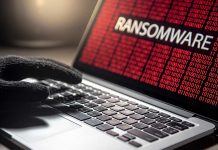
Ransomware attacks, once the domain of script kiddies and amateur cyber-criminals, have evolved into sophisticated, professional cyber-espionage threats. The latest casualty? The Superior Court of Los Angeles County, the largest trial court in the United States. The term “ransomware” sends a shiver down the spines of even the most hardened cybersecurity experts, and for good reason. In today’s digital age, no institution is safe from the grasp of cyber-thieves. This latest attack on the Los Angeles County Superior Court should be a stark wake-up call for every patriot and citizen concerned about the integrity of our justice system.
A Security Nightmare
The shockwaves resonated across Los Angeles County on Monday as all 36 courthouse locations came to a grinding halt. A ransomware attack, detected on Friday, had compromised the entire computer network, forcing Presiding Judge Samantha P. Jessner to shut down nearly all systems to prevent further damage. The clampdown encompassed both internal and external systems, including the court’s website and the MyJuryDuty Portal. This cyber-breach demonstrates how deeply intertwined technology and the judiciary are, highlighting the vulnerability of critical infrastructure to sophisticated cyber-queries.
The Los Angeles County Superior Court: A Nation’s Pride and a Ransomware Victim
California’s largest unified superior court, serving 10 million residents, saw nearly 1.2 million cases filed and 2,200 jury trials conducted in 2022 alone. The Superior Court of Los Angeles County is not just any ordinary institution; it is the very fabric of the U.S. judicial system. This flagrant attack raises critical questions about the security of the institutions we hold dear and trust to protect our rights and freedoms.
Unraveling the Immediate Impact
According to Presiding Judge Samantha P. Jessner, this “unprecedented cyber-attack” necessitated the shutdown of network systems to safeguard sensitive information and ensure future stability. The court’s swift actions, though commendable, are insufficient to remove the sense of unease. Imagine the disarray and confusion for all those dependent on the court’s services, from jurors to court staff, and the uncertainty that hangs over the status of ongoing cases.
The Risks and Security Concerns Ahead
In the face of rising cybersecurity threats, the allocation of $3 billion by the California Judicial Council for trial courts could not have come at a more opportune time. This encapsulates the urgent need for sustained investment in cybersecurity, particularly in the judicial sector where data integrity is paramount. From a security angle, this ransomware attack is a stark reminder of the delicate balance between protecting digital systems and ensuring continuous court operations. A temporary closure might be inconvenient, but a compromised system has far more profound implications for our justice system and the sensitive information it handles.
The Wider Implications for the Judiciary
This incident, though significant, is by no means isolated. The Los Angeles Unified School District recently faced a ransomware attack in September 2022, which underscores the widespread vulnerability of institutions. As all 58 superior courts in California serve their respective counties, the potential risks extend far beyond Los Angeles County. The California Supreme Court, the highest authority in the state, must lead the charge in fortifying the security posture of the entire judicial system, not just the Superior Court of Los Angeles County. The time to act is now.
















